Köpük makine teknolojisindeki son gelişmeler, 2025'te üretim verimliliğini ve ürün kalitesini kökten değiştirdi. Bu makale, en son piyasa eğilimlerinin, dikkate alınması gereken temel faktörlerin ve en son teknoloji özelliklerinin derinlemesine bir analizini sunar. Profesyonel alıcılar, yatırımlarının maksimum getiri sağlamasını garanti altına alarak bilinçli kararlar almak için değerli rehberlik bulacaktır.
İçindekiler:
– Köpük Makinelerinin Kapsamlı Pazar Genel Görünümü
– Köpük Makineleri Pazarının Derinlemesine Analizi
– Köpük Makinesi Seçerken Önemli Faktörler
– Köpük Makinalarındaki Son Teknoloji Özellikleri
– Mevzuata Uygunluk ve Güvenlik Standartları
– Maliyet ve Bütçe Hususları
– İhtiyaçlarınıza Uygun En İyi Köpük Makinesini Seçmek
- Son düşünceler
Köpük Makinelerinin Kapsamlı Pazar Genel Görünümü
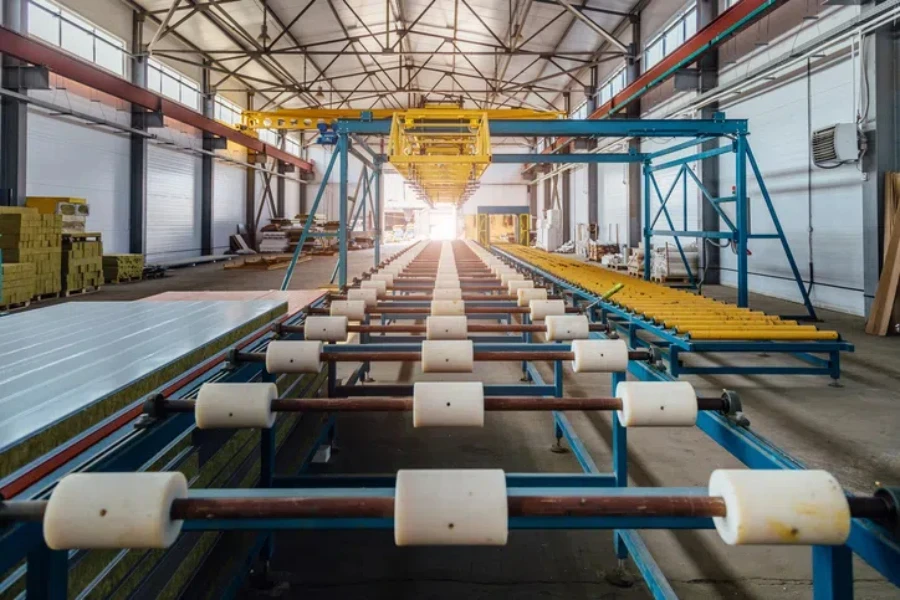
Köpük makineleri pazarı, çeşitli endüstrilerde hafif ve yüksek performanslı malzemelere olan artan taleple yönlendirilen sağlam bir büyüme göstermiştir. 2024 yılında, otomotiv köpüğü için küresel pazar değeri 50.5 milyar ABD dolarına ulaşmış ve 71.1 yılına kadar 2030 milyar ABD doları değerinde olması ve %5.8'lik bir bileşik yıllık büyüme oranıyla büyümesi öngörülmüştür. Benzer şekilde, havacılık köpük pazarı 8.41 yılında 2024 milyar ABD doları değerindeydi ve 15.57 yılına kadar %2030'lık bir bileşik yıllık büyüme oranıyla 10.6 milyar ABD dolarına ulaşması bekleniyor. Bu rakamlar, otomotiv, havacılık ve diğer endüstriyel uygulamalarda kullanılan çeşitli köpük malzemelerinin üretimi için gerekli olan köpük makinelerine yönelik önemli bir talebi göstermektedir.
Köpük makine pazarının genişlemesi, otomotiv ve havacılık endüstrilerinin büyümesi ve inşaat, paketleme ve tüketim mallarında köpük malzemelerin artan benimsenmesiyle yakından bağlantılıdır. Pazar dinamikleri, teknolojik gelişmelerden, enerji açısından verimli malzemelere duyulan ihtiyaçtan ve sıkı çevre düzenlemelerinden etkilenir. Ek olarak, sürdürülebilir ve biyolojik olarak parçalanabilir köpük malzemelerin geliştirilmesinin yeni büyüme fırsatları yaratması beklenmektedir.
Köpük makine pazarındaki kilit oyuncular arasında BASF SE, The Dow Chemical Company, Huntsman Corporation ve Recticel NV yer almaktadır. Bu şirketler, köpük malzemelerin performansını yenilemek ve iyileştirmek için araştırma ve geliştirmeye büyük yatırımlar yaparak, son kullanıcı endüstrilerinin gelişen ihtiyaçlarını karşılamaktadır. Rekabet ortamı, stratejik ortaklıklar, birleşmeler ve satın almalar ve gelişmiş köpük makine teknolojilerinin tanıtımı ile karakterize edilmektedir.
Köpük Makineleri Pazarının Derinlemesine Analizi
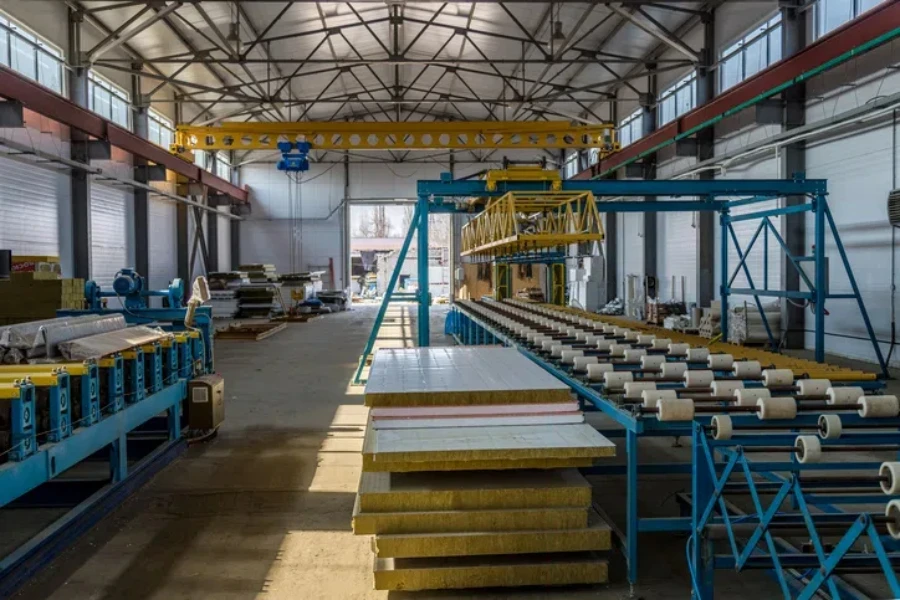
Köpük makineleri pazarı, köpük malzemelerinin verimliliğini ve performansını artırmayı amaçlayan teknoloji ve üretim süreçlerinde önemli ilerlemelere tanık oluyor. Köpük makineleri için temel performans ölçütleri arasında yüksek hassasiyet, enerji verimliliği ve poliüretan, poliolefin ve metal köpükler gibi çeşitli köpük türlerini işleme yeteneği yer alır. Bu malzemeler, otomotiv koltukları, yalıtım, ses yalıtımı ve havacılık bileşenlerindeki uygulamalar için çok önemlidir.
Pazar payı dinamikleri, önde gelen şirketlerin ürün portföylerini ve coğrafi varlıklarını genişletmeye odaklandığı rekabetçi bir ortamı ortaya koyuyor. Hammadde fiyatlarındaki dalgalanmalar ve jeopolitik gerginlikler gibi ekonomik etkiler, pazar eğilimlerini şekillendirmede kritik bir rol oynuyor. Tüketici davranışı, çevre dostu ve sürdürülebilir ürünlere doğru kayıyor ve bu da biyo-bazlı ve geri dönüştürülebilir köpük malzemelerine olan talebi artırıyor.
Dağıtım kanalları, daha geniş bir müşteri tabanına ulaşmak için doğrudan satışlara ve çevrimiçi platformlara giderek daha fazla vurgu yapılarak gelişiyor. Köpük makinelerindeki son yenilikler arasında gelişmiş ekstrüzyon ve kalıplama teknolojileri yer alıyor ve bu da gelişmiş yapısal bütünlük ve performansa sahip yüksek kaliteli köpüklerin üretilmesini sağlıyor. IoT ve AI teknolojilerinin entegrasyonu da dahil olmak üzere üretim süreçlerinin dijitalleştirilmesi, köpük makinelerinin verimliliğini ve hassasiyetini daha da artırıyor.
Müşterilerin canını sıkan noktalar genellikle gelişmiş ekipmanların yüksek maliyeti ve farklı köpük malzemelerini kullanmanın teknik zorlukları etrafında döner. Bu sorunları ele almak için şirketler kapsamlı satış sonrası destek, eğitim ve bakım hizmetleri sunmaya odaklanıyor. Marka konumlandırma stratejileri yenilikçilik, sürdürülebilirlik ve maliyet etkinliğini vurgularken, farklılaştırma stratejileri belirli sektör gereksinimlerini karşılamak için özelleştirilmiş çözümler sunmayı hedefliyor.
Köpük makine endüstrisindeki niş pazarlar arasında tıbbi köpükler, yüksek performanslı yalıtım malzemeleri ve elektrikli araçlar ve havacılık için hafif yapısal bileşenler gibi uzmanlaşmış uygulamalar yer alır. Bu segmentler, bu endüstrilerin katı performans ve düzenleyici standartlarını karşılamak için özel çözümler geliştirebilen şirketler için kazançlı fırsatlar sunar.
Köpük Makinesi Seçerken Önemli Faktörler
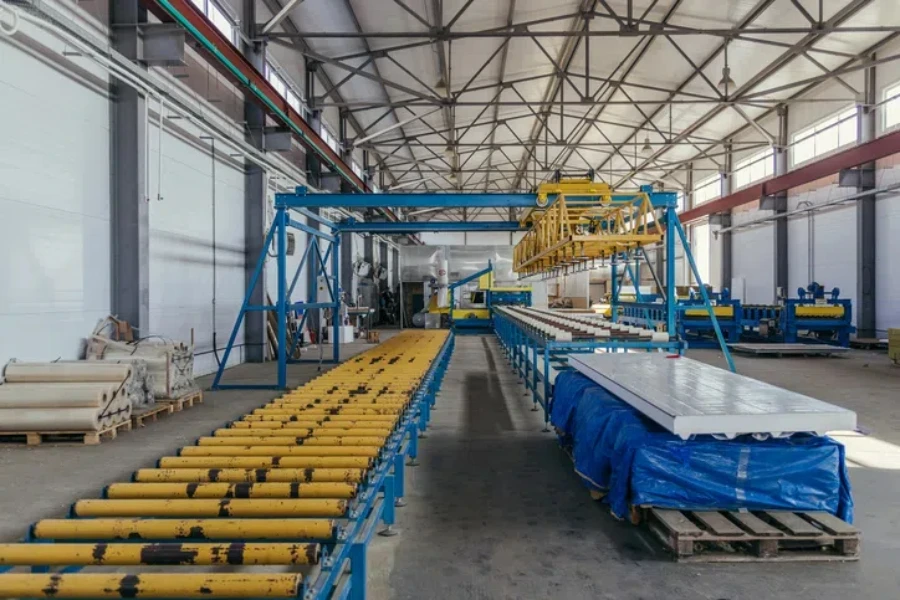
Çeşitli uygulamalarda optimum üretim, verimlilik ve kaliteyi sağlamak için doğru köpük makinesini seçmek çok önemlidir. Bilinçli bir karar vermek için birkaç önemli faktör dikkate alınmalıdır.
Köpük Makinalarının Çeşitleri
Köpük makineleri, her biri belirli uygulamalar ve malzemeler için tasarlanmış çeşitli tiplerde gelir. Farklı tipleri anlamak, ihtiyaçlarınız için en uygun ekipmanı seçmenize yardımcı olabilir.
Açık Hücreli Köpük Makinaları: Bu makineler, filtreleme uygulamaları için ideal olan, birbirine bağlı gözeneklere sahip köpük üretir. Genellikle hava veya sıvı filtrelemenin gerekli olduğu HVAC sistemleri ve su arıtma tesisleri gibi endüstrilerde kullanılırlar. Açık hücreli köpük makinelerinin performansı, gözeneklerin boyutuna ve düzgünlüğüne bağlıdır ve bu da filtreleme verimliliğini önemli ölçüde etkileyebilir.
Kapalı Hücreli Köpük Makinaları: Bu makineler, yüzdürme ve flotasyon uygulamaları için uygun hale getiren kapalı gözenekli köpük üretir. Kapalı hücresel köpük, su emilimine karşı mükemmel direnci nedeniyle denizcilik ve otomotiv endüstrilerinde yaygın olarak kullanılır. Makine, köpüğün yüzdürme özelliklerini korumak için tutarlı hücre yapısını sağlamalıdır.
Esnek Köpük Makinaları: Esnek köpük makineleri, çatlamadan bükülebilen ve darbeleri emebilen köpük üretir. Bu tür köpük, mobilya, otomotiv koltukları ve paketleme gibi yastıklama uygulamalarında yaygın olarak kullanılır. Makine, belirli uygulama gereksinimlerini karşılamak için köpüğün yoğunluğu ve esnekliği üzerinde hassas kontrol sağlamalıdır.
Sert Köpük Makinaları: Sert köpük makineleri, katı bir matris ve çok az veya hiç esnekliğe sahip olmayan köpük oluşturur. Bu tür köpük, inşaatta yalıtım panelleri ve yapısal bileşenler için kullanılır. Makine, bina standartlarını karşılamak için yüksek basınç dayanımı ve boyutsal kararlılık sağlamalıdır.
Retiküler Köpük Makinaları: Retiküler köpük makineleri, açık bir yapıya ve ince malzeme tellerinden oluşan bir ağa sahip köpük üretir. Bu köpük, filtreler ve ses emiciler gibi yüksek yüzey alanı gerektiren uygulamalarda kullanılır. Makine, istenen gözenek yapısını elde etmek için retikülasyon süreci üzerinde hassas kontrol sağlamalıdır.
Performans ve İşlevsellik
Köpük makinelerinin performansı ve işlevselliği, üretilen köpüğün verimliliğini ve kalitesini belirleyen kritik faktörlerdir. Temel performans göstergeleri arasında üretim hızı, köpük yoğunluğu ve hücre yapısı düzgünlüğü yer alır.
Üretim Hızı: Yüksek hızlı köpük makineleri üretim verimliliğini önemli ölçüde artırabilir, teslim sürelerini ve operasyonel maliyetleri azaltabilir. Ancak, artan hızın köpük kalitesini tehlikeye atmamasını sağlamak önemlidir. Gelişmiş kontrol sistemleri ve otomasyon, daha yüksek üretim oranlarında tutarlılığı korumaya yardımcı olabilir.
Köpük Yoğunluğu: Köpüğün yoğunluğu, mukavemet, esneklik ve yalıtım yetenekleri gibi mekanik özelliklerini etkiler. Köpük makineleri, belirli uygulama gereksinimlerini karşılayan köpük üretmek için yoğunluk üzerinde hassas kontrol sağlamalıdır. Bu, ayarlanabilir karıştırma oranları ve kontrollü genleşme süreçleri aracılığıyla elde edilebilir.
Hücre Yapısının Tekdüzeliği: Tutarlı köpük özelliklerinin sağlanması için tekdüze hücre yapısı çok önemlidir. Gelişmiş karıştırma ve kalıplama teknolojilerine sahip makineler, tekdüze hücre boyutu ve dağılımına sahip köpük üretebilir. Bu, tıbbi cihazlar ve yüksek performanslı yalıtım gibi köpük performansının kritik olduğu uygulamalarda özellikle önemlidir.
Teknik özellikler
Köpük makinelerinin teknik özellikleri, farklı malzemeler ve uygulamalarla yetenekleri ve uyumluluğu hakkında fikir verir. Dikkate alınması gereken temel özellikler arasında güç gereksinimleri, karıştırma kapasitesi ve kontrol sistemleri bulunur.
Güç Gereksinimleri: Köpük makinelerinin, boyutuna ve üretim kapasitesine bağlı olarak değişen güç gereksinimleri olabilir. Mevcut güç kaynağının makinenin çalışmasını destekleyebilmesini sağlamak önemlidir. Ek olarak, enerji tasarruflu makineler operasyonel maliyetleri azaltabilir ve çevresel etkiyi en aza indirebilir.
Karıştırma Kapasitesi: Köpük makinelerinin karıştırma kapasitesi, tek bir çevrimde üretilebilecek köpük hacmini belirler. Büyük ölçekli üretim için, verimi artırmak için yüksek karıştırma kapasiteli makineler tercih edilir. Ancak, özel uygulamalar için, hassas karıştırma kapasitesine sahip daha küçük makineler daha uygun olabilir.
Kontrol sistemleri: Köpük makinelerindeki gelişmiş kontrol sistemleri, üretim parametrelerinin hassas bir şekilde izlenmesini ve ayarlanmasını sağlar. Gerçek zamanlı geri bildirime sahip bilgisayarlı kontrol sistemleri, tutarlı köpük kalitesini garanti edebilir ve kusur riskini azaltabilir. Üretim yönetim sistemleriyle entegrasyon, genel verimliliği ve izlenebilirliği de artırabilir.
Malzemeler ve Yapı Kalitesi
Köpük makinelerinin yapımında kullanılan malzemeler ve üretim kalitesi, dayanıklılığını, bakım gereksinimlerini ve genel performansını doğrudan etkiler.
İnşaat malzemeleri: Paslanmaz çelik ve korozyona dayanıklı alaşımlar gibi yüksek kaliteli malzemeler, dayanıklılık ve uzun ömür sağlamak için köpük makinelerinde yaygın olarak kullanılır. Bu malzemeler, kimyasallara ve yüksek sıcaklıklara maruz kalma dahil olmak üzere köpük üretiminin zorlu koşullarına dayanabilir.
Yapı Kalitesi: Köpük makinelerinin yapı kalitesi, güvenilirliğini ve bakım ihtiyaçlarını etkiler. Sağlam yapıya ve hassas mühendislikle üretilmiş bileşenlere sahip makineler arızalara daha az eğilimlidir ve daha az sıklıkta bakım gerektirir. Bu, duruş süresini azaltabilir ve genel üretkenliği artırabilir.
Güvenlik Standartları ve Sertifikalar: Güvenlik standartlarına ve sertifikasyonlara uyum, güvenli çalışmayı sağlamak ve düzenleyici gereklilikleri karşılamak için esastır. Köpük makineleri CE, UL ve ISO sertifikasyonları gibi endüstri standartlarına uymalıdır. Bu sertifikasyonlar, makinenin güvenlik ve performans açısından test edildiğini gösterir ve operatörlere ve paydaşlara güvence sağlar.
Köpük Makinalarındaki Son Teknoloji Özellikleri
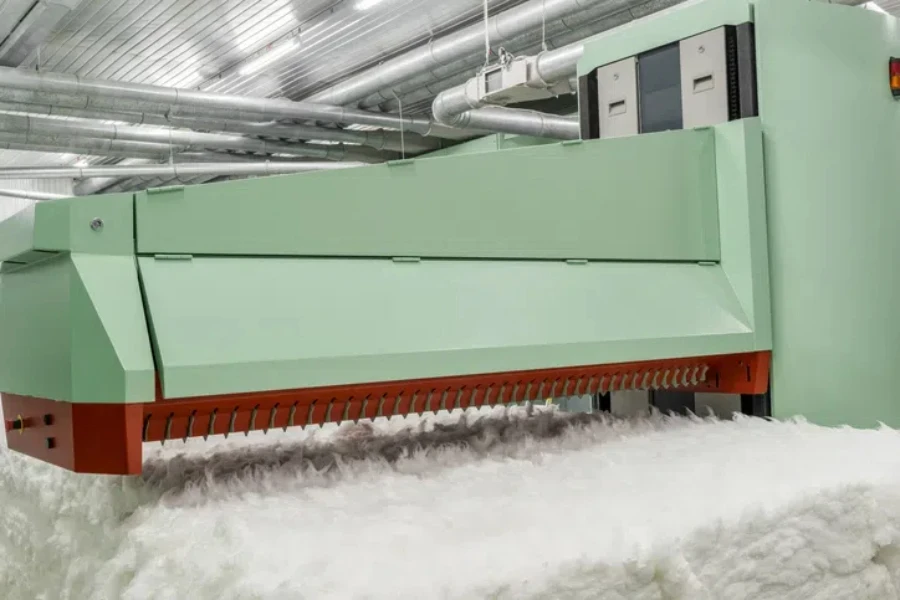
Köpük makine endüstrisi, teknolojideki ilerlemelerle sürekli olarak gelişmektedir. En son özelliklerin dahil edilmesi, üretim verimliliğini artırabilir, köpük kalitesini iyileştirebilir ve operasyonel maliyetleri azaltabilir.
Otomasyon ve Kontrol
Otomasyon ve gelişmiş kontrol sistemleri, köpük makinelerinde devrim yaratarak daha yüksek hassasiyet ve verimlilik sağlıyor. Otomatik makineler, minimum insan müdahalesiyle karmaşık görevleri gerçekleştirebilir, hata riskini azaltabilir ve üretim hızını artırabilir.
Robotik Entegrasyon: Robotik ile köpük makinelerinin entegre edilmesi otomasyonu ve hassasiyeti artırabilir. Robotlar malzeme yükleme, karıştırma ve kalıplama süreçlerini yönetebilir, tutarlı kaliteyi garanti edebilir ve işçilik maliyetlerini azaltabilir. Robotik sistemler ayrıca tekrarlayan görevleri yüksek doğrulukla gerçekleştirebilir ve genel verimliliği artırabilir.
Gerçek zamanlı izleme: Gerçek zamanlı izleme yeteneklerine sahip gelişmiş kontrol sistemleri, operatörlerin üretim parametrelerini izlemesine ve gerektiğinde ayarlamalar yapmasına olanak tanır. Sensörler ve veri analitiği, makine performansına ilişkin içgörüler sağlayarak öngörücü bakıma olanak tanır ve duruş süresini azaltır.
Enerji verimliliği
Enerji tasarruflu köpük makineleri, operasyonel maliyetleri ve çevresel etkiyi önemli ölçüde azaltabilir. Modern makineler, performanstan ödün vermeden enerji kullanımını optimize etmek için tasarlanmıştır.
Değişken Frekanslı Sürücüler (VFD'ler): Köpük makinelerindeki VFD'ler, üretim gereksinimlerine göre motor hızını ayarlayarak enerji tüketimini azaltabilir. VFD'ler ayrıca daha düzgün bir çalışma sağlar ve mekanik bileşenlerdeki aşınmayı azaltarak makinenin ömrünü uzatır.
Isı Geri Kazanım Sistemleri: Isı geri kazanım sistemleri, köpük üretim süreci sırasında üretilen ısıyı yakalayabilir ve yeniden kullanabilir. Bu, harici ısıtma kaynaklarına olan ihtiyacı azaltabilir, enerji maliyetlerini düşürebilir ve çevresel etkiyi en aza indirebilir.
Gelişmiş Malzemeler ve Katkı Maddeleri
Köpük üretiminde gelişmiş malzemelerin ve katkı maddelerinin kullanımı, nihai ürünün özelliklerini artırabilir. Bu malzemeleri işlemek üzere donatılmış köpük makineleri daha fazla çok yönlülük ve gelişmiş performans sunabilir.
Nanokompozitler: Nanokompozitleri köpük üretimine dahil etmek, mukavemet, esneklik ve ısı yalıtımı gibi mekanik özellikleri artırabilir. Köpük makineleri, düzgün özellikler elde etmek için nanokompozitlerin hassas bir şekilde karıştırılması ve dağıtılması yeteneğine sahip olmalıdır.
Çevre Dostu Katkı Maddeleri: Sürdürülebilir ve çevre dostu köpük ürünlerine olan talep artıyor. Biyolojik bazlı ve geri dönüştürülebilir malzemeleri işleyebilen köpük makineleri, çevresel etkiyi azaltırken bu talebi karşılayabilir. Bu makineler, tutarlı kaliteyi garantilemek için üretim süreci üzerinde hassas kontrol sağlamalıdır.
Mevzuata Uygunluk ve Güvenlik Standartları
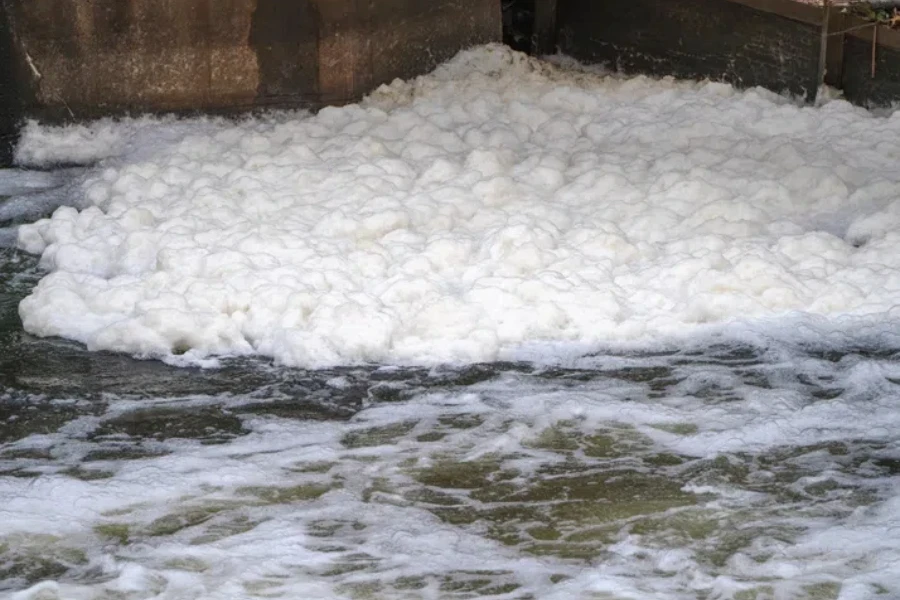
Köpük makineleri seçerken düzenleyici uyumluluk ve güvenlik standartlarına bağlılık kritik hususlardır. Makinenin endüstri düzenlemelerine uygun olduğundan emin olmak yasal sorunları önleyebilir ve güvenli bir çalışma sağlayabilir.
Endüstri Standartları
Köpük makinelerinin güvenlik, kalite ve performansı garantilemek için endüstri standartlarına uyması gerekir. Dikkate alınması gereken temel standartlar arasında CE, UL ve ISO sertifikaları bulunur.
CE Belgesi: CE sertifikası, makinenin Avrupa güvenlik, sağlık ve çevre koruma standartlarına uyduğunu gösterir. Bu sertifika, köpük makinelerinin Avrupa pazarlarına ihraç edilmesi için olmazsa olmazdır.
UL Sertifikası: UL sertifikası, makinenin Underwriters Laboratories tarafından belirlenen güvenlik standartlarını karşıladığını garanti eder. Bu sertifika Kuzey Amerika'da yaygın olarak tanınır ve güvenli çalışmayı sağlamak için olmazsa olmazdır.
ISO Sertifikası: ISO sertifikası, makinenin kalite yönetimi ve üretim süreçleri için uluslararası standartları karşıladığını gösterir. ISO sertifikalı makineler, güvenilirliği ve performansıyla dünya çapında tanınır.
Güvenlik Özellikleri
Köpük makinelerinde güvenlik özellikleri operatörleri korumak ve kazaları önlemek için önemlidir. Modern makineler güvenli çalışmayı sağlamak için çeşitli güvenlik mekanizmalarıyla donatılmıştır.
Acil Durdurma Sistemleri: Acil durdurma sistemleri, operatörlerin acil bir durumda makineyi hızla durdurmasını sağlar. Bu sistemler, kazaları önlemek ve makineye verilen hasarı en aza indirmek için çok önemlidir.
Güvenlik Korumaları ve Muhafazalar: Güvenlik korumaları ve muhafazalar operatörleri hareketli parçalardan ve tehlikeli maddelerden korur. Bu özellikler yaralanmaları önlemek ve güvenli çalışmayı sağlamak için önemlidir.
Kilit Sistemleri: Kilit sistemleri, güvenlik korumaları yerinde değilse makinenin çalışmasını önler. Bu, operatörlerin güvenlik mekanizmalarını atlayamamasını sağlayarak kaza riskini azaltır.
Maliyet ve Bütçe Hususları
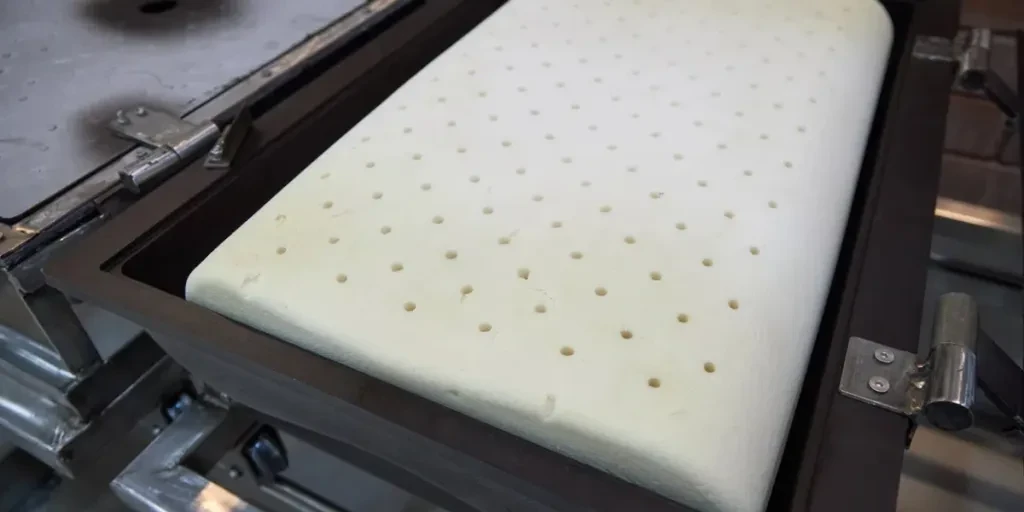
Köpük makinelerinin maliyeti karar alma sürecinde önemli bir faktördür. İlk yatırımı uzun vadeli işletme maliyetleri ve potansiyel yatırım getirisi (YG) ile dengelemek esastır.
İlk Yatırım
Köpük makinelerine yapılan ilk yatırım, satın alma fiyatını, kurulum maliyetlerini ve gereken ek ekipmanları içerir. Üretim gereksinimlerini karşıladığından emin olmak için makinenin yeteneklerini ve özelliklerini göz önünde bulundurmak önemlidir.
Alış fiyatı: Köpük makinelerinin satın alma fiyatı, türüne, kapasitesine ve özelliklerine bağlı olarak değişir. Gelişmiş özelliklere sahip üst düzey makineler daha yüksek bir ön maliyete sahip olabilir ancak daha fazla verimlilik ve kalite sunabilir.
Kurulum maliyetleri: Kurulum maliyetleri, makinelerin kurulumu, tesisatların bağlanması ve ekipmanın kalibre edilmesi için yapılan harcamaları içerir. Profesyonel kurulum, makinelerin doğru ve güvenli bir şekilde çalışmasını sağlar.
Ek ekipman: Belirli uygulamalar için karıştırıcılar, kalıplar ve kontrol sistemleri gibi ek ekipmanlar gerekebilir. Köpük makineleri için bütçe oluştururken bu maliyetleri hesaba katmak önemlidir.
Operasyonel Maliyetler
İşletme maliyetleri enerji, bakım ve sarf malzemeleri için harcamaları içerir. Makinenin uzun vadede maliyet etkin olmasını sağlamak için bu maliyetlerin dikkate alınması önemlidir.
Enerji Maliyetleri: Enerji tasarruflu makineler, güç tüketimini optimize ederek operasyonel maliyetleri önemli ölçüde azaltabilir. Makinenin güç gereksinimlerini ve enerji tasarrufu özelliklerini dikkate almak önemlidir.
Bakım Maliyetleri: Köpük makinelerinin düzgün çalışmasını sağlamak için düzenli bakım şarttır. Sağlam yapıya ve gelişmiş kontrol sistemlerine sahip makineler daha az sıklıkta bakım gerektirebilir, bu da duruş süresini ve maliyetleri azaltır.
Sarf: Kimyasallar, katkı maddeleri ve kalıplar gibi sarf malzemeleri köpük üretimi için gereklidir. Köpük makineleri için bütçe oluştururken bu sarf malzemelerinin bulunabilirliğini ve maliyetini göz önünde bulundurmak önemlidir.
Yatırım Getirisi (ROI)
Köpük makinelerinin potansiyel yatırım getirisini değerlendirmek, ilk yatırımı, işletme maliyetlerini ve elde edilen potansiyel geliri göz önünde bulundurmayı içerir. Gelişmiş özelliklere sahip yüksek kaliteli makineler, üretim verimliliğini ve ürün kalitesini artırarak daha yüksek bir yatırım getirisi sunabilir.
Üretim verimliliği: Yüksek üretim hızlarına ve otomasyona sahip makineler, verimi artırabilir, teslim sürelerini ve operasyonel maliyetleri azaltabilir. Bu, daha yüksek gelire ve daha hızlı bir yatırım getirisine yol açabilir.
Ürün kalitesi: Yüksek kaliteli köpük makineleri, tutarlı ve yüksek kaliteli ürünler üretebilir, kusur ve iade riskini azaltır. Bu, müşteri memnuniyetini artırabilir ve satışları artırabilir.
Piyasa talebi: Köpük ürünleri için pazar talebini ve potansiyel uygulamaları anlamak, köpük makinelerinin yatırım getirisini belirlemeye yardımcı olabilir. Pazar ihtiyaçlarını karşılayan makinelere yatırım yapmak daha yüksek satışlara ve karlılığa yol açabilir.
İhtiyaçlarınıza Uygun En İyi Köpük Makinesini Seçmek
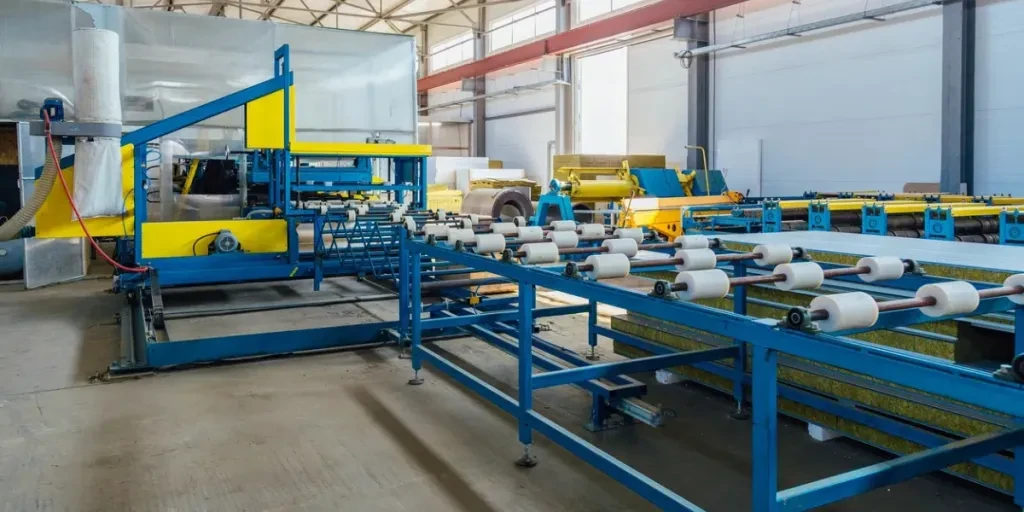
En iyi köpük makinesini seçmek, türler, performans, teknik özellikler, malzemeler, güvenlik standartları ve maliyet gibi çeşitli faktörlerin dikkatli bir şekilde değerlendirilmesini gerektirir. Bu faktörleri değerlendirerek, işletmeler üretim ihtiyaçlarını ve bütçe kısıtlamalarını karşılayan bilinçli kararlar alabilirler.
Türler ve Uygulamalar
Köpük makinelerinin türlerini ve uygulamalarını anlamak, en uygun ekipmanı seçmeye yardımcı olabilir. Örneğin, açık hücreli köpük makineleri filtrasyon uygulamaları için idealdir, kapalı hücreli köpük makineleri ise yüzdürme ve flotasyon için uygundur.
Performans ve Özellikler
Köpük makinelerinin performansını ve teknik özelliklerini değerlendirmek, üretim gereksinimlerini karşıladığından emin olmanızı sağlar. Temel performans göstergeleri arasında üretim hızı, köpük yoğunluğu ve hücre yapısı düzgünlüğü bulunur. Güç gereksinimleri, karıştırma kapasitesi ve kontrol sistemleri gibi teknik özellikler, makinenin yetenekleri hakkında fikir verir.
Malzemeler ve Güvenlik Standartları
Köpük makinelerinin yapımında kullanılan malzemeleri ve güvenlik standartlarına uyumu göz önünde bulundurmak, dayanıklılık ve güvenli çalışmayı sağlamak için önemlidir. Yüksek kaliteli malzemeler ve CE, UL ve ISO sertifikaları gibi endüstri standartlarına uyum, güvenilirlik ve performans güvencesi sağlar.
Maliyet ve YG
İlk yatırımı uzun vadeli işletme maliyetleri ve potansiyel yatırım getirisi ile dengelemek, maliyet etkin kararlar almak için çok önemlidir. İşletmeler, satın alma fiyatını, kurulum maliyetlerini, işletme giderlerini ve potansiyel geliri değerlendirerek yatırımları için en iyi değeri sunan köpük makinelerini seçebilirler.
Son Düşüncelerimiz
Sonuç olarak, doğru köpük makinesini seçmek, türler, performans, özellikler, malzemeler, güvenlik standartları ve maliyet dahil olmak üzere çeşitli faktörlerin kapsamlı bir değerlendirmesini içerir. Bu faktörleri göz önünde bulundurarak, işletmeler üretim ihtiyaçlarını ve bütçe kısıtlamalarını karşılayan, optimum verimlilik, kalite ve karlılığı garanti eden bilinçli kararlar alabilirler.
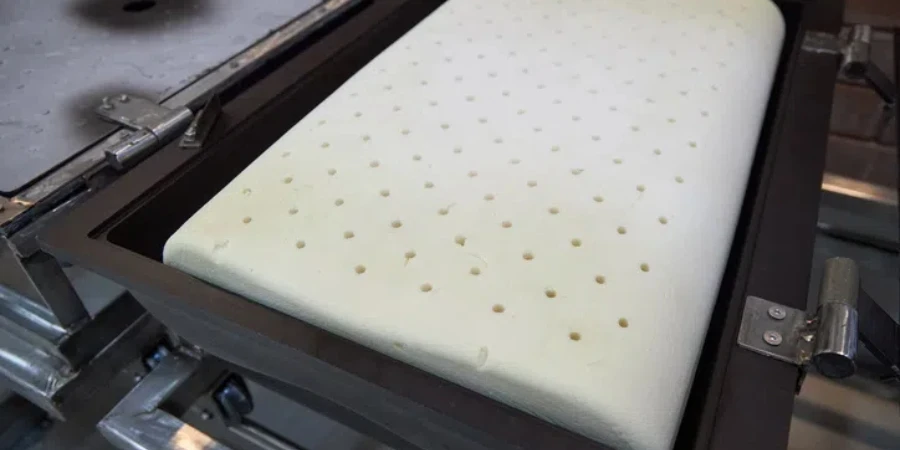




 বাংলা
বাংলা Nederlands
Nederlands English
English Français
Français Deutsch
Deutsch हिन्दी
हिन्दी Bahasa Indonesia
Bahasa Indonesia Italiano
Italiano 日本語
日本語 한국어
한국어 Bahasa Melayu
Bahasa Melayu മലയാളം
മലയാളം پښتو
پښتو فارسی
فارسی Polski
Polski Português
Português Русский
Русский Español
Español Kiswahili
Kiswahili ไทย
ไทย Türkçe
Türkçe اردو
اردو Tiếng Việt
Tiếng Việt isiXhosa
isiXhosa Zulu
Zulu